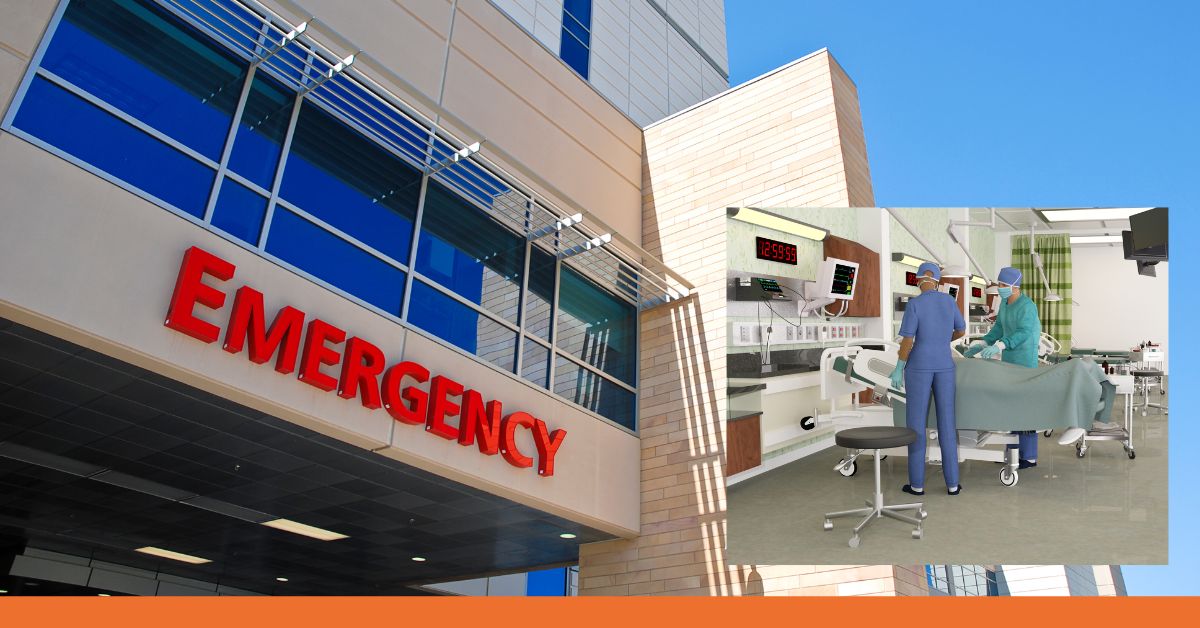Medical emergencies may happen to us at any given time. More often than not, we may have injuries or illnesses that will surprise us at any moment. And if these issues need immediate medical attention, you have two main options on where you should go: either urgent care or an emergency room.
Both urgent care centers and emergency rooms in Connecticut can handle immediate medical situations. So, whether you have a broken bone, are experiencing difficulty breathing, or require a blood test, both are the way to go. However, their capabilities and handling of patients distinguish them from one another.
What is the difference between urgent care and an emergency room? This article will show you the clear distinctions between the two.
While both facilities are meant to handle emergencies, they have distinct differences. It’s important to remember that urgent care and emergency rooms have their characteristics designed to deal with different scenarios. Understanding the distinction between the two will help you make an informed decision in an emergency.
So, where would you go if a medical emergency arises: urgent care or emergency room?
The short answer is: it depends.
Many people know urgent care centers through different names. Some call them after-hours clinics, while others call them minute clinics or minor emergency centers. The best way to think about urgent care centers is standard medical clinics since they deal with illnesses that aren’t immediately life-threatening.
Some of the illnesses that urgent care centers deal with are the following:
It’s also important to understand that these establishments don’t have a regulating body overseeing them. With that in mind, they’re not required to accept patients who can’t afford their services.
Urgent care centers usually have the following facilities:
Appointments. Most urgent care allow walk-in patients, while some don’t even entertain appointments. Some centers allow patients to set a same-day appointment, while others add these patients to a waitlist.
Operating Hours. The vast majority of urgent care centers are often throughout the year, including evenings and weekends.
Staffing. An urgent care is usually composed of two prominent individuals: a physician and an advanced care practitioner (either a nurse or physician assistant). These practitioners often have varying specialties.
Laboratories. Most of these clinics have at least a limited lab capable of handling simple tests like blood tests and urinalysis.
Payment. These clinics often require you to pay upfront or during servicing.

The stark contrast between urgent care facilities and emergency rooms is how they deal with anyone who comes to their facilities. The law requires emergency rooms (ERs) to comply with the Emergency Medical Treatment and Labor Act (EMTALA). Whether the incoming patient can afford their services or not, emergency rooms must accept them. Most emergency rooms are connected to a larger hospital capable of providing a much more comprehensive range of medical services.
Emergency rooms are the facilities you’d run into when in a severe or life-threatening medical condition. Some of the cases these facilities can deal with include the following:
Like most emergency rooms in the world, these facilities can suffer from overloading. However, they are perfect for handling any medical emergency.
Emergency rooms usually have the following characteristics:
Appointment. Emergency rooms don’t accept appointments. Incoming patients must go through a triage process once they arrive. This process helps the ER staff determine who needs medical attention first.
Operating Hours. ERs are open all the time, 24 hours a day, seven days a week.
Staffing. ERs must have at least one physician in the vicinity at all times. Advanced practice providers also help the doctors attend to emergent conditions.
Laboratories. ERs can carry out many diagnostic tests like cancer tests, allergy tests, genetic testing, and more.
Payment. Unlike urgent care centers, ERs don’t require their patients to pay upfront or at the time of service.

Urgent care can handle non-life-threatening medical conditions. So with that in mind, you should go to urgent care if your illness or injury needs to be taken care of within 24 hours, like minor broken bones or cuts that need stitching. And although they usually handle last-minute care, they can’t always deal with life-threatening medical conditions.
If your healthcare provider isn’t accessible at the time being, then an urgent care center might be the right place for you. However, keep in mind that these facilities are much like business establishments. They may be ideal for dealing with minor emergencies outside the 9-to-5, but they also have opening and closing times.
Below are some of the most common conditions that urgent care centers deal with daily:
Since urgent cares deal with relatively simple health concerns, these facilities usually cater to more patients at a much faster pace. So if you have a minor injury, an easily treatable condition, or a simple test, you’re more likely to get better and faster service from an urgent care center.
If you think your concern is life-threatening and requires immediate medical attention, the emergency rooms are the proper establishments for you. Unlike urgent care, ERs can deal with significant to severe emergency conditions. For example, traumatic injuries like gunshot wounds, blunt force wounds, or motor accidents are medical situations you’d often see in an ER.
Some life-threatening situations where emergency rooms are ideal are the following:
The list of conditions above is not complete but rather guidelines that can significantly help you determine if you need to go to an emergency room or not. Remember not to downplay the symptoms you’re experiencing because doing so might put your life at risk. If you’re unsure whether you need to visit an emergency room, still head to the emergency room for a comprehensive evaluation.

It is important to note that urgent care centers are usually cheaper than availing the services of emergency rooms. Estimates even suggest that the former’s services are ten times cheaper than the latter. One of the few reasons for this is that urgent care centers receive most of their earnings from people who have private insurance. In addition, many urgent cares also accept Medicare and even worker’s insurance compensation.
If you have private insurance, an ER visit copay will range from $50 to hundreds of dollars, depending on the health plan you’re currently holding. Some plans will waive the ER copayment if you need to be admitted to the hospital. With that in mind, check your health plan’s coverage for further details.
The total out-of-pocket upfront costs for an ER visit are more likely to be higher than the ER copayment. This is because the establishment would need to run some crucial tests, not to mention the specialists that need to see you. Also, depending on your plan’s deductible — and if you’ve met your deductible for the year — you can be stuck with a high cost.
Nobody wants a horrifically large ER bill. Luckily, the No Surprise Act prevents out-of-network and balance billing, ensuring that your ER costs are more predictable and reasonable. Starting this year, ER claims will be covered at in-network rates, and people now have more ways to seek assistance if everything goes wrong and get stuck with what they believe is a surprise bill.
It’s essential to know the difference between an urgent care center and an emergency room. Knowing the different capabilities of the two facilities will give you a better understanding of the options available to you in case of an emergency. Remember: urgent care centers are for minor non-life-threatening circumstances, while emergency rooms deal with life-threatening medical conditions.
If you’re looking for urgent care in Connecticut, don’t hesitate to call us. We provide urgent care for daily family life, and we serve quality care and affordable treatment.

During this surge in COVID-19 cases, our primary focus is meeting the high demand for tests, and we are seeing higher than usual wait times. This means we are unable to answer most phone calls. Please know that our teams are working very hard during this time to care for as many patients as safely as possible. Please click the button below for answers to common questions. We appreciate your understanding.